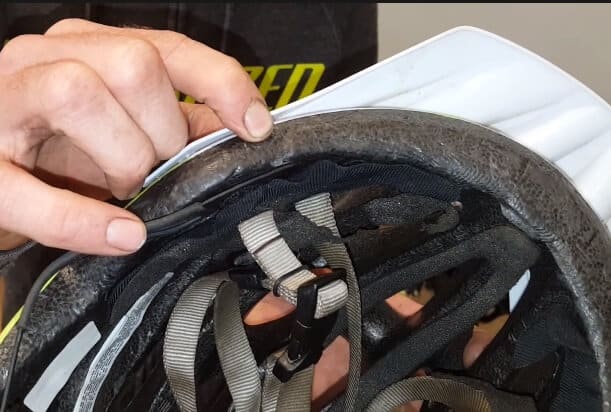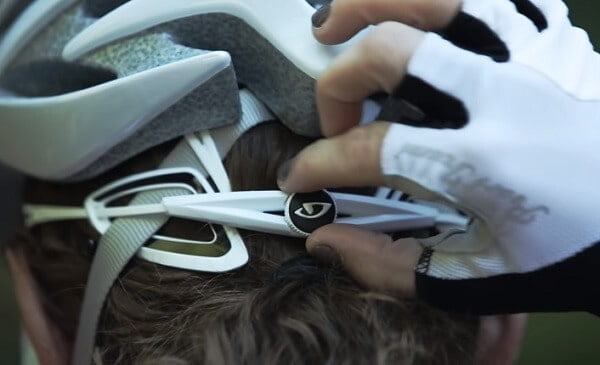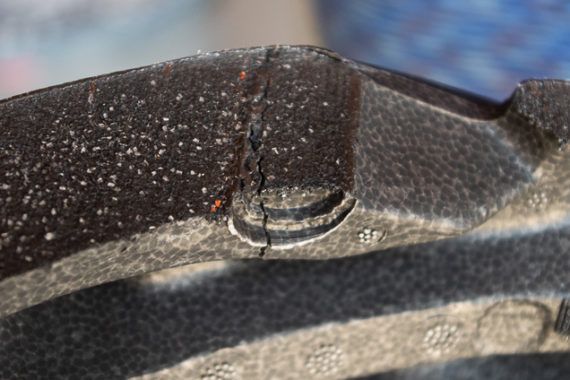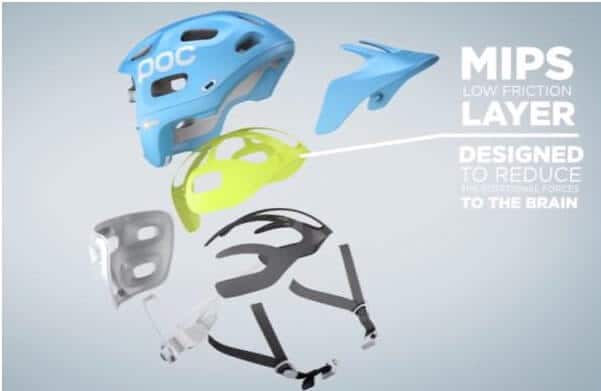Bike helmets are a crucial piece of equipment for cyclists. Wearing a helmet translates to an almost 70% reduction in the chance of a serious head injury. Therefore, it is important to buy a good quality helmet. So, if you’re on a budget and plan on buying a helmet, then, we have got you covered. A lot of these budget helmets are capable of offering you optimal protection for your head. However, what many people don’t think about is when to replace a bike helmet. It is important to change your helmet at just the right time to avoid wastage, unnecessary spending, and above all injury.

Bike helmet
When should you replace your bike helmet?
It is not always clear when a helmet should be replaced. Often a helmet can seem perfectly fine but still be unusable as a protection measure. Regardless, there are certain situations when you should, without a doubt, get rid of your helmet.
1. After a crash
All helmets are single-use safety products. Meaning, it can provide effective protection for only one crash. During an impact, the bulk of the force is absorbed by the foam liner which is usually made of EPS (expanded polystyrene) and sometimes made of EPP (expanded polypropylene). They work by compressing under load and absorbing the energy from the impact. However, these materials are not elastic. After being compressed, the foam will not spring back, and if another impact occurs at that location, the brunt of the force will be transferred to your head.

Bike crash
Image Source: thenounproject.com
Now you might be thinking – what if I don’t hit my head during a crash? Well, it is not uncommon for people to not remember hitting their head in an accident. Your head might feel just fine but this means the helmet did its job. Also, the helmet might look unscathed but in reality, the foam liner has most likely been compressed. This is not always visible due to the outer shell. Therefore, always replace a helmet immediately after a crash.
2. If there is visible damage

Damaged foam liner
Make sure to keep an eye on all the parts of a helmet throughout its life. You might just find that something is damaged. These could be cracks, fractures, or bumps both on the outer shell and the foam liner. Sometimes the shell could be starting to separate from the foam. If your helmet has a MIPS liner, then check if the holding tabs are still fixed. There is also the occurrence of broken buckles, frayed straps, or a broken retention system which leads us to our next point.
3. When it does not fit properly
There is no point in wearing a helmet if it does not fit properly. If a crash does occur, then the helmet will most likely come off your head which is something you definitely don’t want. Whether it’s due to long-term use or due to improper care, the straps and retention system will not function properly sooner or later. The ratchet dial, straps, and even the inner padding might get worn down. Moreover, the different parts could also break after an impact. In these cases, you won’t be able to get as snug a fit as you used to. Hence, a new lid becomes necessary.
➥ Here is our guide on right helmet sizing and perfect fitting.

Retention system
4. If it is from the 70s or 80s
These helmets might be rare but some still do exist. During the 1980s, safety regulations for bike helmets had been updated, and any helmet manufactured before that is not safe for use. The materials used were not as good and many didn’t even have a hard outer shell. Vintage helmets might have an aesthetic appeal, but it’s not worth compromising on safety. The good news is that some helmets from the late 80s might have ASTM or Snell certification stickers. Such helmets are perfectly safe to use today.
➥ If you aren’t fully aware of the safety standards for bike helmets, we suggest, you have a look at the necessary safety standards.
Degradation of materials
There is a common misconception that prolonged exposure to sunlight and sweat will degrade the foam liner. However, EPS and EPP are extremely stable substances that can linger in a landfill for at least a few hundred years. A helmet would never get a certification if it gets corroded just by sweat. Research conducted on hundreds of helmets by MEA Forensic, an engineering firm, found that the safety level of the EPS foam did not decrease with age. Some of these helmets were up to 26 years old.
Nonetheless, while the foam may not degrade, other parts of the helmet might. Prolonged exposure to UV rays does in fact deteriorate the outer polycarbonate shell. If you notice that the color is fading, then it has likely become more brittle and hence, less protective. Additionally, as mentioned before, parts of the retention system get worn and stop working properly.
Inspecting a helmet
It is very important to thoroughly inspect your bike helmet from time to time, even if you haven’t been in any falls. Who knows what you might find. Minor damage can easily go unnoticed with daily use. Take some time and follow these steps to check your helmet:-
1. First, inspect the outer shell. You have to replace the helmet if you see any of the following
- Cracks or abrasions on the surface
- Discoloring of the shell
- A part of the shell pops in when you press on it with your thumb
2. Take a look at the liner
- Remove the padding and look carefully at the foam
- Check for dents, hairline fractures, or any other damage
3. Check the straps and buckles
- The straps should be in good shape
- The buckles should work like they’re supposed to
4. Finally, inspect the rear stabilizer
- It should still have its structural integrity and work fine
- Pull-on it to see if it gives at all

Cracked foam
Image Source: nytimes.com
New technologies
Sometimes a new technology/design could get released that improves the safety of all helmets. While you might have a helmet that is a few years old but still in tip-top shape, it could be worth it to get a new helmet with enhanced protection. An example of this is when MIPS technology came out which offers better protection against rotational impacts. At the time, mountain bike helmets were just as good as they are today. However, most present-day MTB lids have opted to integrate a MIPS layer that makes them safer.

MIPS layer
Frequently Asked Questions
Q1. Is it necessary to change your helmet even after a small tumble with no significant damage?
Ans.: On slight accidents like this, it is quite difficult to tell since the outer shell covers the EPS foam. The shell itself might look perfectly okay, but there’s no guarantee that the EPS hasn’t buckled a bit. Hairline fractures are also hard to spot. What might have felt like a small bump on your head could have been a pretty serious blow. Moreover, the hit could compromise the overall structural integrity of the helmet. So, use your best judgment and err on the side of caution.
Q2. How long can a bike helmet be used for? Do they expire?
Ans.: Many manufacturers recommend switching helmets every 3 years. Although, we feel this number to be a bit low, and a good helmet can last 5 to 10 years or even more depend on a lot of things. These include frequency of use, how it is stored, and the number of small hits and bumps it has taken. Bike helmets have a very good shelf life as well. If a helmet is stored properly and handled with care, it can serve you for a really long time, given that no major impact occurs.
Q3. How to take proper care of a bike helmet?
Ans.: To get the best possible use out of a bike helmet, you must take good care of it. You will also be helping out the environment by making your helmet last as long as possible. The first thing you have to do is to handle it more carefully. Small bumps don’t seem like much but it can add up. Eventually, the foam liner will lose its integrity. Next, be sure to store it properly. Keep it away from sunlight, dirt, and any sort of chemicals. When carrying the helmet with your luggage, on a flight, for example, packing it at the bottom could damage it. Using a padded bag might help. To clean the helmet, use only water and soap, and be sure to dry it fully before storing it.
Conclusion
The best advice we could give you is to treat your helmet the best possible way so that it lasts. You’ll be saving money and reducing plastic waste at the same time. Use it for a few years and then after careful inspection, you can choose to replace it. And if you happen to crash, get a new one immediately. An important tip – cut the straps and rear stabilizer before disposing of a helmet so that no one can reuse it from the trash. Remember to never compromise on safety.
